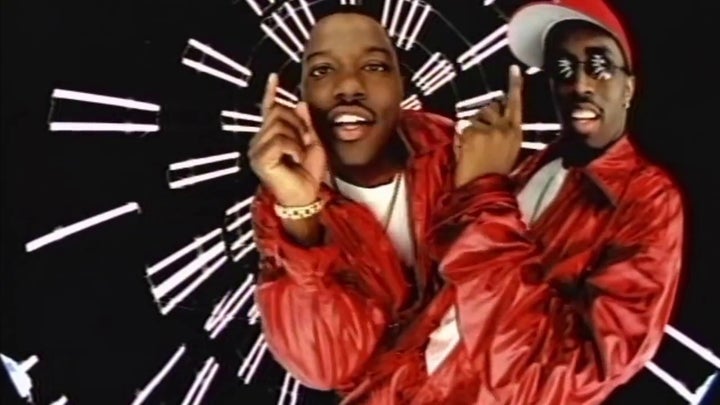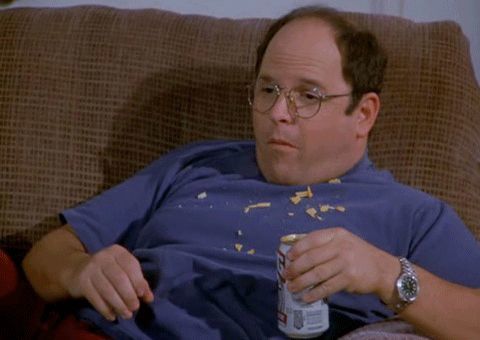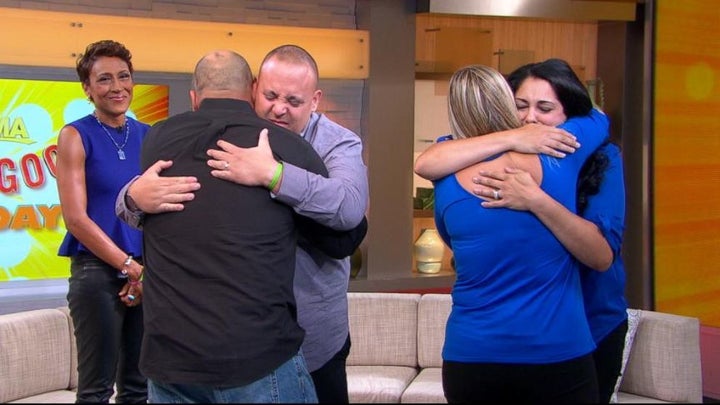It all began with a phone call from an unknown Minneapolis number. A sweet-sounding woman on the other line informed me that she was calling from an organization called Be The Match and asked if I remembered being added to the bone marrow registry. I did not and it took some gentle prodding for me to remember that I had indeed been swabbed at a conference I had attended in 2009 at the behest of a coworker who had survived leukemia. After confirming my identity, the woman on the phone said she had wonderful news to share; I was a potential match to donate bone marrow to a patient with leukemia.
I really wish I could tell you that my initial reaction was joyous or heroic. I wish I could tell you that my first response to this news was even remotely positive, altruistic or logical but that would be a lie. No, my very first thought was ‘I gotta get out of this thing’ like I had just walked into a vegetarian Thanksgiving dinner.
I was consumed with selfish but practical thoughts. Work is crazy right now and my small start-up needs me (mostly true). I just got married and want to enjoy the newlywed phase (very true). This will keep me off the basketball court for months and my team will suffer without me (completely false).
I was also consumed by selfish and impractical thoughts. There must be someone out there who is significantly older, retired and has no friends that happens to have some of the finest marrow in all the land. That guy should donate so I don’t have to.
Despite my hesitation, after going through my medical history it became clear that I was healthy enough to donate and if the final blood tests proved I was a perfect match then the process would begin as soon as possible.

Newlyweds shouldn’t have to donate turned out to be a pretty stupid theory
It turns out I am not alone with these thoughts.
Mary Halet, Director of Community Engagement for Be The Match, helped clear up some common misperceptions for me. She let me know that one of the biggest issues with marrow donation is media portrayal. From a Will Smith self-administered spinal tap in the terrible film Seven Pounds, to a recent Chicago Fire episode that depicted a donor in excruciating pain, the false depiction of marrow donation in TV and film continues to this day. The reality is much less dramatic.
When I first got called, I thought that only older men should be chosen to donate—men who have lived longer lives. It seemed unfair to me to ask someone like myself, a healthy 30-year-old, to go through this medical procedure. I learned that cells from younger donors have been proven to lead to higher patient survival rates and thus 95% of donations come from young adult donors.
I also learned that because men have more body mass it means they also have more marrow. Unlike the relationship between money and problems, it turns out that Mo’ Marrow means Less Problem. This is why Be The Match places such a heavy emphasis on getting young men to sign up as donors. As it turns out guys have liquid and spongy gold pumping through our veins and living inside our bones.

The Mo’ Marrow we come across the Less Problems we see
Mary also informed me there are two ways to donate and the doctor decides what’s best for the patient. The overwhelming majority of marrow donations (77% to be exact) are via a non-surgical, relatively painless outpatient procedure called Peripheral Blood Stem Cell (PBSC) donation. Basically a machine draws your blood from one arm, extracts the cells it needs, and returns the remaining blood back to your body through your other arm.
For a minority of patients, a doctor will need to extract marrow directly from the back of the pelvic bone (not the tailbone) using a needle but it won’t look like this. Thanks to the magic of anesthesia, a patient will feel no pain during the procedure and most donors feel completely recovered within a few weeks.
Prior to committing, I had the opportunity to watch a donor go through a live PBSC donation process. The guy was wearing sweatpants and watching Stranger Things in the middle of a workday while donating. This cozy fellow was living the dream!

Add in some medical equipment and this is close to a live look in at a PBSC donation
Watching that donation was a turning point for me. This dreaded vision I had in my head of giant needles and massive pain was instantly replaced by a little bit of shame for hesitating and a little bit of excitement to play hooky from work and catch up on my Netflix queue when my turn came.
A series of tests confirmed that I was indeed a perfect marrow match and this time I felt lucky. I did have one slight hiccup to a normal donation process. As the doctors searched in vain (sorry) for a suitable vein to draw blood from, I was told that I am part of an incredibly small percentage of men who may not have arm veins large enough for this donation process. Although it is not an official medical term, my wife now loves to remind me that I suffer from ‘little girl vein syndrome’. Despite my newfound medical condition, we were now all systems go.
It was hard to believe but in only a few short weeks I went from being scared and hesitant to being over the top excited to donate.
When you are called as a potential match for a patient, you only learn their age, sex and illness. In my case, my patient was a 36-year-old male suffering from an advanced form of leukemia. This brave man was fighting for his life and I couldn’t wait to give. I checked my phone even more than the 2,000 times a day I normally do and I anxiously waited to hear from Be The Match.
As I waited to get my confirmed donation date, I was able to get in contact with my former colleague who had received a transplant. He informed me that it is highly likely that donors and patients who are matched share a great deal of genetic makeup. When he met his own donor, he said it felt more like a cousin or a brother than a stranger due to an incredibly similar family history. Most patients match with someone of their same race and ethnicity.
That is why it is incredibly important for people of all races and ethnicities to register to donate, so that more patients can find their match and get the transplant they need.
Just days before my scheduled donation date, the procedure was abruptly postponed. I was told this is not ideal, but is fairly common. A few weeks later we were all set to go again and once again it was postponed. Two postponements is not a good sign. A third donation date would be scheduled soon and I was told to stay ready. The call I had been dreading and praying would never have to be made came. My patient had passed away.
I cried on the phone feeling like a family member had just died. Someone I'd never met, and now never would, had fought for months but wouldn't get a chance to receive my marrow. I was devastated but as bad as I felt I couldn't even imagine how the family of my intended recipient was feeling. A 36-year-old man who had fought a hideous disease bravely for a long time had just passed away and I felt helpless and I felt sad.
A 36-year old man is tangible to me. I recently turned 30 and recently got married. What 36 looks like is a crystal-clear picture in my head. I envision him living how I see myself at the age of 36. With kids, with a wife of 7 years, a house, a great career and seemingly – a very long life ahead. My recipient was 36. 36 is a tragedy, 36 is far too young.
I also felt guilty. You can't help but think if you could have done something differently. If I had said yes right away instead of asking for a day to think about it, would the outcome be different? If I got to my initial blood test on a Friday instead of waiting for the weekend would he be alive right now?
I was told these are all natural questions to ask and emotions to feel. The Be The Match staff assured me that just knowing a match was out there and that a total stranger was willing and ready to donate filled the family with so much joy. I found this comforting.
We always hear the good stories, the stories with happy endings. We see the segment on Good Morning America of a donor and a now healthy recipient who had never met before coming together for the first time. We should see these stories and we should focus primarily on the happy endings because they are inspiring and powerful reminders of the good that can be done in this world by regular people.

You should absolutely watch this video
Although my story isn’t a happy one, it doesn’t have to end on a sad note. By far the biggest thing I realized throughout this process is the misconceptions about donation and how easy it is to get involved. I want to share with younger men specifically that you are needed and that you can actually save a life. If my story can help YOU to join the registry than this all had a purpose.
As for me? You better believe my name is still on that registry and I hope very badly to one day soon get a call from a random Minneapolis number again. This time I'll answer with an enthusiastic “YES”, I’ll prep my little girl veins for donation and I’ll start setting up my Netflix queue.
As the Holiday season has begun I truly cannot think of a better gift you can give than potentially saving a life. If you’d like to sign up to the national bone marrow registry please visit my referral code page and Bethematch.org for more information: https://join.bethematch.org/DonorLewis

